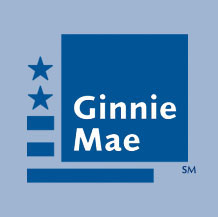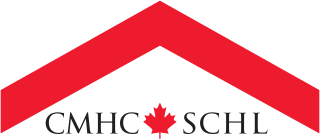Related Research Articles

The Federal Housing Administration (FHA), also known as the Office of Housing within the Department of Housing and Urban Development (HUD), is a United States government agency founded by President Franklin Delano Roosevelt, created in part by the National Housing Act of 1934. The FHA insures mortgages made by private lenders for single-family properties, multifamily rental properties, hospitals, and residential care facilities. FHA mortgage insurance protects lenders against losses. If a property owner defaults on their mortgage, FHA pays a claim to the lender for the unpaid principal balance. Because lenders take on less risk, they are able to offer more mortgages. The goal of the organization is to facilitate access to affordable mortgage credit for low- and moderate-income and first-time homebuyers, for the construction of affordable and market rate rental properties, and for hospitals and residential care facilities in communities across the United States and its territories.

The Government National Mortgage Association (GNMA), or Ginnie Mae, is a government-owned corporation of the United States Federal Government within the Department of Housing and Urban Development (HUD). It was founded in 1968 and works to expand affordable housing by guaranteeing housing loans (mortgages) thereby lowering financing costs such as interest rates for those loans. It does that through guaranteeing to investors the on-time payment of mortgage-backed securities (MBS) even if homeowners default on the underlying mortgages and the homes are foreclosed upon.
The Federal National Mortgage Association (FNMA), commonly known as Fannie Mae, is a United States government-sponsored enterprise (GSE) and, since 1968, a publicly traded company. Founded in 1938 during the Great Depression as part of the New Deal, the corporation's purpose is to expand the secondary mortgage market by securitizing mortgage loans in the form of mortgage-backed securities (MBS), allowing lenders to reinvest their assets into more lending and in effect increasing the number of lenders in the mortgage market by reducing the reliance on locally based savings and loan associations. Its brother organization is the Federal Home Loan Mortgage Corporation (FHLMC), better known as Freddie Mac. In 2022, Fannie Mae was ranked number 33 on the Fortune 500 rankings of the largest United States corporations by total revenue.
A savings and loan association (S&L), or thrift institution, is a financial institution that specializes in accepting savings deposits and making mortgage and other loans. The terms "S&L" or "thrift" are mainly used in the United States; similar institutions in the United Kingdom, Ireland and some Commonwealth countries include building societies and trustee savings banks. They are often mutually held, meaning that the depositors and borrowers are members with voting rights, and have the ability to direct the financial and managerial goals of the organization like the members of a credit union or the policyholders of a mutual insurance company. While it is possible for an S&L to be a joint-stock company, and even publicly traded, in such instances it is no longer truly a mutual association, and depositors and borrowers no longer have membership rights and managerial control. By law, thrifts can have no more than 20 percent of their lending in commercial loans—their focus on mortgage and consumer loans makes them particularly vulnerable to housing downturns such as the deep one the U.S. experienced in 2007.

An FHA insured loan is a US Federal Housing Administration mortgage insurance backed mortgage loan that is provided by an FHA-approved lender. FHA mortgage insurance protects lenders against losses. They have historically allowed lower-income Americans to borrow money to purchase a home that they would not otherwise be able to afford. Because this type of loan is more geared towards new house owners than real estate investors, FHA loans are different from conventional loans in the sense that the house must be owner-occupant for at least a year. Since loans with lower down-payments usually involve more risk to the lender, the home-buyer must pay a two-part mortgage insurance that involves a one-time bulk payment and a monthly payment to compensate for the increased risk. Frequently, individuals "refinance" or replace their FHA loan to remove their monthly mortgage insurance premium. Removing mortgage insurance premium by paying down the loan has become more difficult with FHA loans as of 2013.
Bank of America Home Loans is the mortgage unit of Bank of America. In 2008, Bank of America purchased the failing Countrywide Financial for $4.1 billion. In 2006, Countrywide financed 20% of all mortgages in the United States, at a value of about 3.5% of the United States GDP, a proportion greater than any other single mortgage lender.

Canada Mortgage and Housing Corporation is Canada's federal crown corporation responsible for administering the National Housing Act, with the mandate to improve housing by living conditions in the country.

Nehemiah Corporation of America is a non-profit organization based in Sacramento, California specializing in homeownership, affordable housing and community development. It started in 1994 as a small organization, but grew to prominence later in the 1990s after it developed a program that allowed home buyers to make down payments on their purchases using funds that were derived from the home sellers. This program, the Nehemiah Program, became popular and was widely emulated, giving birth to what came to be known as the seller-funded down-payment assistance industry. The industry attracted criticism from U.S. federal agencies and was ultimately shut down in 2008 by a change in federal law.
Mortgage insurance is an insurance policy which compensates lenders or investors in mortgage-backed securities for losses due to the default of a mortgage loan. Mortgage insurance can be either public or private depending upon the insurer. The policy is also known as a mortgage indemnity guarantee (MIG), particularly in the UK.

A mortgage loan or simply mortgage, in civil law jurisdicions known also as a hypothec loan, is a loan used either by purchasers of real property to raise funds to buy real estate, or by existing property owners to raise funds for any purpose while putting a lien on the property being mortgaged. The loan is "secured" on the borrower's property through a process known as mortgage origination. This means that a legal mechanism is put into place which allows the lender to take possession and sell the secured property to pay off the loan in the event the borrower defaults on the loan or otherwise fails to abide by its terms. The word mortgage is derived from a Law French term used in Britain in the Middle Ages meaning "death pledge" and refers to the pledge ending (dying) when either the obligation is fulfilled or the property is taken through foreclosure. A mortgage can also be described as "a borrower giving consideration in the form of a collateral for a benefit (loan)".
The New York State Housing Finance Agency (HFA) is a New York State public-benefit corporation created in 1960 to build and preserve affordable multifamily rental housing throughout New York State. HFA sells bonds and uses the proceeds to make mortgages to affordable housing developers.

The California Housing Finance Agency (CalHFA), established in 1975, is an independent California state agency within the California Department of Housing and Community Development that makes low-rate housing loans through the sale of taxable and tax exempt bonds.
Public housing policies in Canada includes rent controls, as well as subsidized interest rates and grants. Early public housing policy in Canada consisted of public-private lending schemes which focused on expanding home ownership among the middle class. The first major housing initiative in Canada was the Dominion Housing Act of 1935, which increased the amount of credit available for mortgage loans.
Loan modification is the systematic alteration of mortgage loan agreements that help those having problems making the payments by reducing interest rates, monthly payments or principal balances. Lending institutions could make one or more of these changes to relieve financial pressure on borrowers to prevent the condition of foreclosure. Loan modifications have been practiced in the United States since the 1930s. During the Great Depression, loan modification programs took place at the state level in an effort to reduce levels of loan foreclosures.
New York State Homes and Community Renewal (HCR) is New York State's affordable housing lender. Its mission is to expand affordable housing opportunities for low- and moderate-income New Yorkers. HCR consists of several state agencies and corporations: the New York State Division of Housing and Community Renewal (DHCR), the New York State Housing Finance Agency (HFA), the State of New York Mortgage Agency (SONYMA).

The mortgage industry of the United States is a major financial sector. The federal government created several programs, or government sponsored entities, to foster mortgage lending, construction and encourage home ownership. These programs include the Government National Mortgage Association, the Federal National Mortgage Association and the Federal Home Loan Mortgage Corporation.
Non-profit housing developers build affordable housing for individuals under-served by the private market. The non-profit housing sector is composed of community development corporations (CDC) and national and regional non-profit housing organizations whose mission is to provide for the needy, the elderly, working households, and others that the private housing market does not adequately serve. Of the total 4.6 million units in the social housing sector, non-profit developers have produced approximately 1.547 million units, or roughly one-third of the total stock. Since non-profit developers seldom have the financial resources or access to capital that for-profit entities do, they often use multiple layers of financing, usually from a variety of sources for both development and operation of these affordable housing units.
The Home Affordable Refinance Program (HARP) is a federal program of the United States, set up by the Federal Housing Finance Agency in March 2009, to help underwater and near-underwater homeowners refinance their mortgages. Unlike the Home Affordable Modification Program (HAMP), which assists homeowners who are in danger of foreclosure, this program benefits homeowners whose mortgage payments are current, but who cannot refinance due to dropping home prices in the wake of the U.S. housing market correction.

A USDA Home Loan from the USDA loan program, also known as the USDA Rural Development Guaranteed Housing Loan Program, is a mortgage loan offered to rural property owners by the United States Department of Agriculture, Rural Development.
The Utah Housing Corporation or UHC is a public corporation that the Utah legislature created in 1975 to advocate for affordable housing for lower-income residents in the state of Utah. UHC is an independent government agency that raises funds in order to offer mortgage loans to lower-income people and to provide resources to developers and builders for creating affordable housing projects. It does not receive any funds from the State of Utah and is completely self-supporting via the issuing of tax-exempt bonds and the creation of and selling of mortgage-backed securities to investors.
References
- ↑ "NYSABO 2018 Report" (PDF). November 5, 2018. pp. 16, 29, 44.
- ↑ "State of New York Mortgage Agency Act". Laws of New York . Laws of the State of New York Passed at the Sessions of the Legislature. Vol. 193rd sess.: II. 1970. pp. 2224–2243. hdl:2027/uc1.b4378132. ISSN 0892-287X. Chapter 612, enacted 12 May 1970, effective immediately.
- ↑ NYS Executive Department (10 May 1926), New York State bill jackets - L-1970-CH-0612, New York State Library , retrieved 2023-05-29
- ↑ Amdursky, Robert Sidney (1971). "The State of New York Mortgage Agency". The Urban Lawyer . 3 (3): 467–474. doi:10.2307/27892773. JSTOR 27892773.
- ↑ "NYSHCR subsidiary listing". November 4, 2018.
